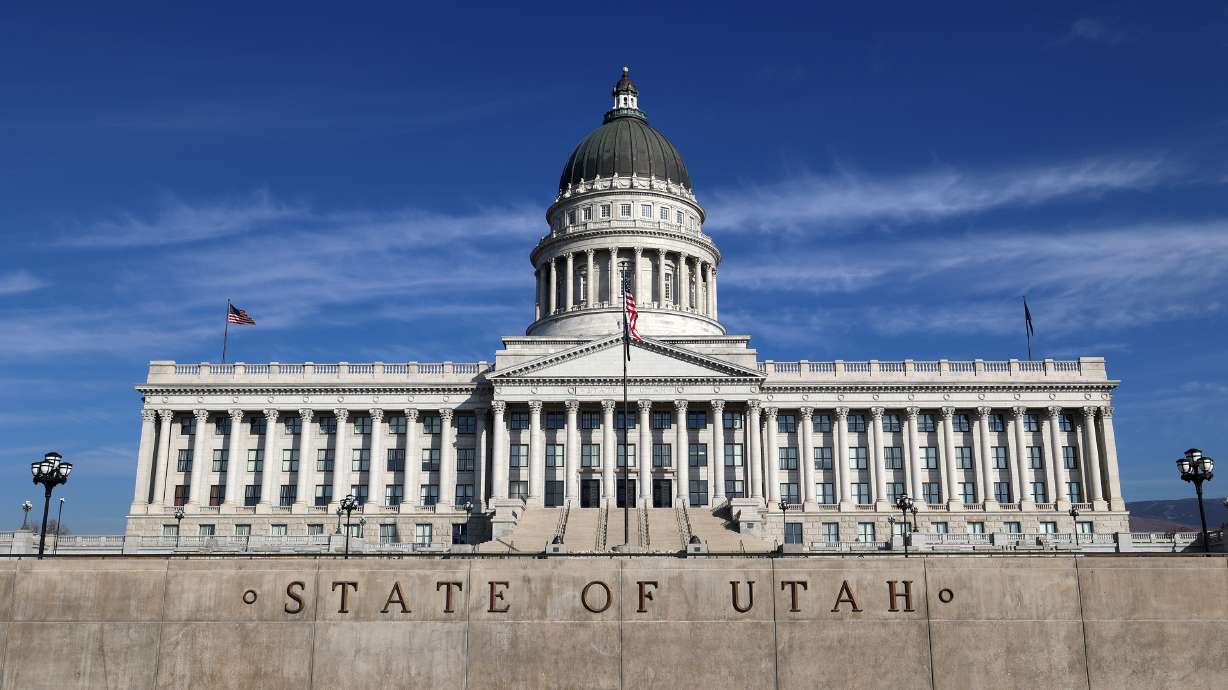Estimated read time: 5-6 minutes
This archived news story is available only for your personal, non-commercial use. Information in the story may be outdated or superseded by additional information. Reading or replaying the story in its archived form does not constitute a republication of the story.
SALT LAKE CITY — New research shows how six significant economic and demographic transitions are shaping a "new Utah" and what the future of the Beehive State could look like.
"Utahns entrust those in public service with the responsibility to keep Utah strong and flourishing. Utah leaders' guidance of the 'new Utah' will determine the state's future success," says a report from the Kem C. Gardner Policy Institute released Monday.
The research shows how Utah has changed and presents ideas on what Utah leaders can do to ensure Utah remains a thriving state with positive economic and social outcomes. The report outlines six significant transitions — all associated with growth, change and "deeply interconnected" — that represent the new Utah.
More populous state
Since 2010, Utah has grown from a small-sized state to a medium-sized state.
Between 2010 and 2020, Utah leap-frogged four states — Iowa, Arkansas, Mississippi and Nebraska — with research suggesting Utah's population will continue to grow.

"I think sometimes we think of Utah as a small, interior western state when, in fact, we've become a midsize state — and that's exactly why there's so much interest in our state by Major League Baseball, National Hockey League. ... We've got a convention headquarters hotel, Delta signed this long-term lease with our beautiful city and new airport. These are signs of a midsize state," said Natalie Gochnour, director of the Gardner Institute.
While population growth is not a new phenomenon for the state, "what is new is a critical mass of people creating new opportunities and also bumping up against various constraints. Many ask how we can continue to grow and still maintain the attributes we love about Utah," the report says.
External growth and fertility
Data from the Gardner Institute shows Utah has gained more population from external growth like in-migration than it has from internal growth (births minus deaths) over the past two years.

With Utah's fertility rate declining or holding steady for 14 consecutive years, migration is expected to outpace internal growth "for the foreseeable future," according to the report.
About 17% of Utah migrants come by way of California, followed by Texas (7.2%) and Idaho (6.6%). Something that Gochnour said was interesting to her while compiling the report is that 1 in 4 of the people moving to Utah are moving back to the state.
"We do see that people go away and come back," Gochnour said.
Older population
From 1980 to 2020, Utah's median age increased from 24.2 to 31.3, according to the Gardner Institute.
"We expect this aging trend to continue for the foreseeable future, with even greater impacts in the coming decades," the report says.
Utah is seeing an older median age for multiple reasons. One is that people are aging in Utah due to strong healthcare systems and advancements in medicine, and the other can be attributed to the declining fertility rate.
"Our projections show that even in the next 30 years, we expect 1 in 5 Utahns to be over the age of 65. It's a pretty significant change for our state," said Jennifer Robinson, chief of staff at the Gardner Institute.
Increasing diversity
Over the past few decades, Utah has become increasingly multicultural.
Data from the report shows that today, nearly 1 in 4 Utahns is a racial minority or ethnic minority — a sharp uptick compared to the 9.5% of Utahns who were a racial or ethnic minority in 1990.

The data from the report shows that Utah now ranks 34th among states for the largest racial and ethnic minority share in the country. In addition, Robinson said projections show that approximately 1 in 3 Utahns will be a racial and ethnic minority within the next two decades.
Thriving economy
While traditionally home to a stronger economy, Utah has jumped into elite status relative to other states. An example of this is Utah's job growth consistently ranking at or near the top of all states.
"We expect the Utah economy to continue to be among the best-performing economies in the nation," the report says.
One of the testaments to the resiliency of Utah's economy is how it responds to crises like the Great Recession and the COVID-19 pandemic.

"Coming out of the Great Recession, Utah led the way, always at or near the top in terms of year-over-year job growth rate," said Phil Dean, chief economist at the Gardner Institute. "During the pandemic, we have some of the smallest job losses and some of the earliest economic recovery coming out of the pandemic."
Housing market
Recent years have seen home prices in Utah skyrocket to levels well above the nation's average, with the housing supply failing to match the demand.
"Unless Utah significantly increases its housing supply, we expect high housing costs to continue for the foreseeable future, presenting a significant challenge to Utah's economic competitiveness and rising generation," the report states.

Additionally, only six states in the U.S. — Hawaii, California, Massachusetts, Washington, Oregon and Colorado — have higher median single-family home prices than Utah, according to the report.
Dean said that he sees housing affordability as one of, if not the greatest, economic risk to the state.
"It makes it harder for employers to be able to attract people here in the state (and) it makes it harder for us to be able to keep our existing workforce," Dean said. "I think we risk hollowing out the middle class when we don't have that (affordable housing) available to a wide swath of people in the state. I'm very concerned about it and ultimately, it is a matter of supply. We need to increase the supply of housing in the state."
The full report can be found here.









